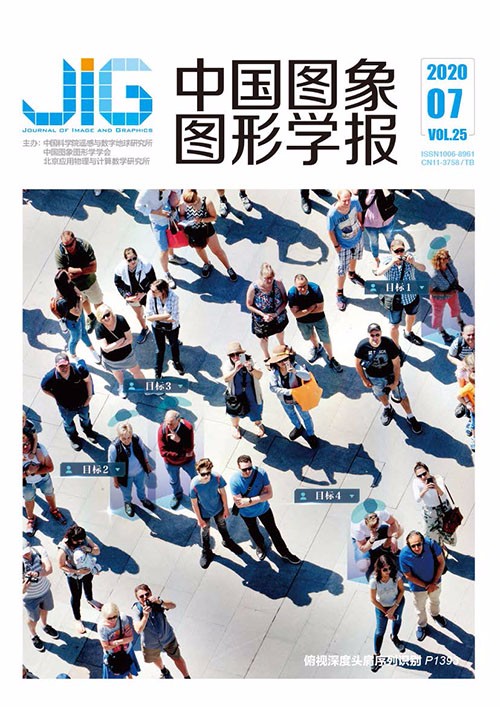
非真实感绘制技术研究现状与展望
摘 要
非真实感绘制技术(non-photorealistic rendering, NPR)主要用于模拟艺术风格、表现艺术特质和传达用户情感等,是计算机图形学的重要组成部分,其研究对象逐渐丰富,研究方法不断创新。本文从基于图像建模的绘制方法、基于深度学习的绘制方法、中国特有艺术作品的数字化模拟、非真实感情感特征识别以及非真实感视频场景绘制等5个方面概述目前研究进展,然后从扩展非真实感研究对象、增强视频绘制帧间连贯性、提取艺术风格情感特征以及评价非真实感绘制结果等4个角度讨论需要进一步研究的问题。针对需要深入研究的问题,指出提高算法的通用性和绘制效率,以及提高深度学习网络的泛化性,有助于扩展研究对象,模拟艺术风格的多样性,同时减小视频场景的帧间跳变;对艺术风格作品具有的情感特征、内在机理特征进行模拟,有助于提高绘制结果与艺术风格图像的相似度;结合主观和客观评价模型,可以更准确地对绘制结果进行评价,同时有利于优化网络模型参数,提高绘制效率。非真实感绘制在计算机视觉、文化遗产保护等领域具有重要的应用前景,但其研究对象、绘制算法、绘制效率仍然存在很多亟待解决的问题,随着硬件设备的不断改进,综合运用学科交叉知识、扩展应用领域将进一步推动非真实感绘制技术的发展。
关键词
Research status and progress of non-photorealistic rendering technology
Qian Wenhua1, Cao Jinde2, Xu Dan1, Wu Hao1(1.School of Information Science and Engineering, Yunnan University, Kunming 650504, China;2.School of Automation, Southeast University, Nanjing 210009, China) Abstract
Many art works have high artistic and commodity values. The production of realistic art works requires considerable time and strict manual skills. With the development of modern science and technology, the use of computer algorithms to synthesize and simulate different art styles is a popular topic in computer vision and image processing. Non-photorealistic rendering (NPR) technique mainly simulates art styles and expresses artistic characteristics. This technique is crucial for the protection and inheritance of art culture. Researchers have simulated and synthesized cartoon, sketch, oil painting, Chinese fine brushwork, calligraphy, and other art works on the basis of traditional image models. The development of deep learning has enabled researchers to use convolutional neural networks to transfer art features from style images to content images. In recent years, NPR research objects have been gradually enriched, research methods have been continuously enhanced, and the application fields of NPR have been expanding widely. However, the simulation and transfer of different styles using computers are challenges and open questions in NPR. This study reviews some NPR progresses in five important aspects, namely, traditional modeling rendering methods, depth learning transfer methods, digital simulation of Chinese unique art works, emotion recognition of art works, and artistic transfer from videos. We summarize the important stylized transfer methods in these aspects and show some simulation results. This paper further summarizes the issues that can be additional study fields in NPR, including research objects, video coherence among different frames, artistic style emotion, and evaluation criteria. Different art styles exist in the world, and the way to simulate these various works remain an open question. Although the transformation of video styles enriches the application field of NPR, it is a problem when the texture is complex, occlusion occurs, or the motion vector is inaccurate. Some artistic details are lost, which may cause discontinuity among video frames. NPR should extract high-level semantic features of art works in addition to simulating low-level artistic style features, such as color and texture. It can effectively improve the accuracy and efficiency of intelligent information retrieval and simulate, protect, and inherit artistic style through high-level semantic feature recognition and transfer. Evaluation standard also remains a problem. Whether the NPR algorithm can simulate real manual traces and users' creative intention has become the standard to evaluate the merits and demerits of the methods. This paper elaborates and concludes the problems that need to be further studied. First, we conclude that improving the generality and rendering efficiency of algorithms can expand research objects and simulate different art styles. Improved NPR algorithms can also raise the coherence among different video frames. Second, the recognition and extraction of emotional and intrinsic mechanism features from different stylistic works are another research fields. We can transfer the emotional and intrinsic features to the simulation results, which can improve the similarity between the results and artistic styles. Finally, the evaluation criteria for simulation results are an important research question. This paper concludes that combination with subjective and objective evaluation models can increase the evaluation accuracy of the results, and the combination can be applied to optimize the parameters of deep learning networks. NPR has important application prospects in computer vision, cultural heritage protection, education, and image processing. However, numerous problems remain to be solved. With the continuous improvement of hardware equipment, the comprehensive application of multidisciplinary knowledge and the expansion of application fields will promote the development of NPR.
Keywords
non-photorealistic rendering(NPR) image modeling digital simulation emotion recognition evaluation criteria
|



 中国图象图形学报 │ 京ICP备05080539号-4 │ 本系统由
中国图象图形学报 │ 京ICP备05080539号-4 │ 本系统由